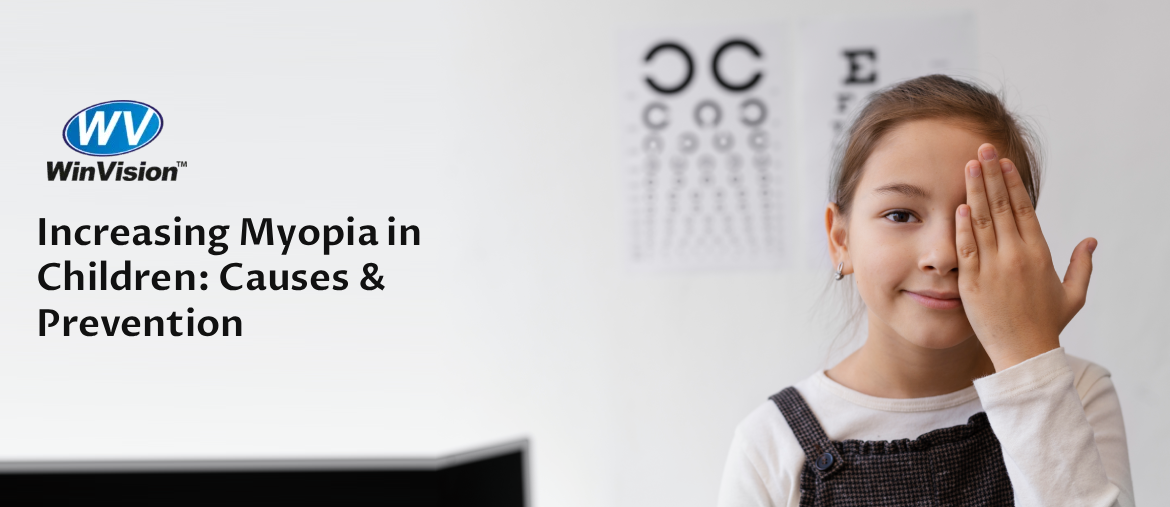Myopia has been identified as one of the eye health issues that is rapidly increasing among children all over the world. According to doctors, the number of children requiring glasses at a young age has increased significantly over the past decade. This is a matter that is becoming more popular among parents, and what they ought to understand to avoid the risks and the causes.
Why Is Myopia Increasing Among Children?
Excessive Screen Time
Digitizing the learning process, playing games, and being constantly surrounded by screens have had a disastrous impact on children’s eyesight. Long durations are spent looking at things close to the eyes, thus straining the eye muscles.
Reduced Outdoor Activities
Various studies have indicated that children with minimal outdoor activity are prone to myopia. Natural light has a protective effect on eye development, and even one or two hours spent outdoors can help lower the risk. Modern indoor lifestyles, academic stress, and entertainment through gadgets have minimized this.
Genetics and Family History
When a parent or both parents are shortsighted, then the likelihood of the child being myopic is very high. Although hereditary factors cannot be altered, early monitoring is important in children with a history of vision problems.
Early Exposure to Devices
Even children as young as two or three are being exposed to smartphones, tablets, and televisions. Premature exposure to devices strains developing eyes and increases the chances of early-onset myopia.
Poor Reading Habits
Eye strain can be increased by reading in dim light, keeping books too close, studying long hours without interruption, and working with uncorrected lenses. These habits, when practiced daily, may impact the focusing ability of a child and predispose him or her to the risks of having myopia.
Signs That Your Child May Have Myopia
In children, the parents need to be sensitive to early signs, such as:
- Tending to squint or blink
- Being too close to the TV or keeping the books too close
- Headaches or sore eyes were complained of
- Problems with visualizing the whiteboard at school
- Itching eyes or forgetting to read
Prevention Strategies for Myopia in Children
Encourage More Outdoor Time
One of the best ways to prevent children from developing myopia is outdoor activity. Natural sunlight helps ensure normal eye growth and reduces the occurrence of refractive errors.
Limit Screen Time and Create Healthy Digital Habits
The screen time must be regulated based on the age of the child:
- Less than 5 years: Low levels of screen time.
- 5–10 years: Less than 2 hours daily
- 10-15 years: Only use of screens as a means of study and some entertainment.
Ensure Good Lighting and Reading Posture
Children should:
- Read and write in an upright position
- Keep a minimum distance of 3040 cm between books
- Have properly lit study spaces
- Do not read when lying or in moving cars
- Such practices help keep the focusing system healthy.
Promote a Nutrient-Rich Diet
- Vitamin A: Spinach, sweet potatoes, carrots
- Omega-3 fatty acids: Fish, flax seeds, nuts
- Lutein and Zeaxanthin: Greens, eggs
- Vitamin C & E: seeds, citrus fruits
Regular Eye Checkups
The most significant step in preventing myopia progression is early detection. Despite apparent normal vision, children should have a full eye test every 6-12 months.
Use of Special Lenses and Treatments
In case your child is diagnosed with myopia, physicians can recommend:
- Myopia-control glasses
- Atropine eye drops (low-dose)
- Ortho-K lenses
Myopia in children is a common problem worldwide. But with just a little awareness and some simple preventive steps, parents can help protect their child’s vision and possibly prevent them from becoming myopic. Promoting outdoor games, limiting screen time, reading well, and regularly changing eyeglasses can make a big difference. Timely intervention is known to maintain vision besides favoring healthy eye growth in the future. Through daily habits, a family can provide children with a foundation for clearer, stronger eyesight that lasts longer.

